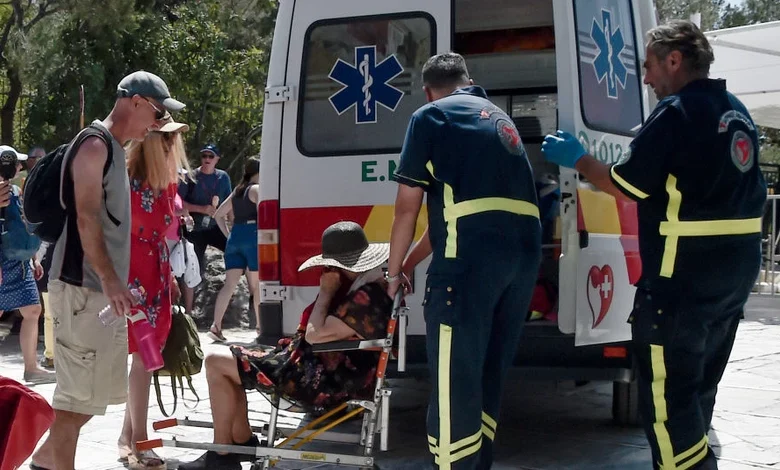Over 2,000 people died in Europe due to heatwave: how to protect yourself and your loved ones

In the middle of the summer of 2025, Europe found itself in the power of record heat. Temperatures in several Western European countries consistently exceeded 40 degrees Celsius for ten days, causing forest fires, mass blackouts and a major overload on medical services. However, this time it is not only about a weather anomaly, but human lives. A study by the Imperial College of London and the London School of Hygiene and Tropical Medicine confirmed that this heat wave was fatal for more than two thousand residents of European cities.
The price of overheating: why heat is no longer just discomfort
As reported Reuters, scientists estimate that about 2,300 people died during the 10-day period of extreme heat, with at least 1,500 deaths directly attributable to climate change. The study is based on the analysis of epidemiological models and historical data on mortality in 12 cities, including Barcelona, Madrid, London, and Milan. It was here that the heat turned out to be the most dangerous.
The temperature in these cities has increased by an average of four degrees due to climate change, the authors of the study emphasize. This is an invisible, but extremely noticeable acceleration of thermal processes in the environment. At a temperature of +40°C and above, the human body loses the ability to independently regulate heat exchange. Elderly people, patients with chronic diseases, children, people with mental disorders and people without permanent housing are especially vulnerable.
Why are few people talking about death from the heat?
One of the health effects of heat is that such deaths are often left out of official statistics. People are dying of heart attacks, strokes, respiratory failure, or complications from chronic diseases, and the cause appears to be formally unrelated to the heat. However, it is overheating and dehydration that trigger these exacerbations.
Scientists explain: they used methods of rapid assessment of the number of dead, because in many countries such deaths are not registered as heat-related. In addition, some governments do not publish relevant data at all. Thus, the actual number of victims may be higher. This raises new questions for societies: is the infrastructure of cities ready for new temperature realities? Does the population receive warnings in time? Does a person understand that the heat is no less dangerous than a storm or a downpour?
Western Europe in June: the hottest on record
According to meteorologists, June 2025 has become the hottest in the entire history of observations in Western Europe. The term “heat stress” has become the new standard, not the exception: even in regions where the heat previously did not exceed 30-32°C, the readings reached 38-42°C. Forest fires in France, problems with water supply in Spain, thousands of people hospitalized with heatstroke in Italy – all these are the consequences not only of the temperature, but also of the inability to adapt to it.
In conditions of high population density and intensive use of energy (for example, for air conditioning), cities turn into traps. Concrete, asphalt, glass – retain heat, enhancing the effect. The urban environment, instead of protecting, threatens people even more.
Climate change is a catalyst for deadly waves
Dr. Ben Clarke, one of the researchers at Imperial College, pointed out that climate change has increased the extremes of heat waves. “This weather was significantly hotter than it would have been without the influence of climate change. And therefore, much more dangerous,” he explained.
An increase in the average temperature by just a few degrees creates an avalanche effect: the heat lasts longer, the nights do not bring coolness, the recovery of the body slows down. Such conditions are ideal for heat stroke, which develops in a matter of hours.
At the same time, it should be noted: in the future, such episodes will become more regular, and not exceptional. And Europe, like Ukraine, should look for answers not only in forecasts, but in changes in infrastructure, medicine, information systems and public space.
How Ukrainians can protect themselves from the heat
Tips based on the recommendations of doctors, ecologists and the European Centers for Disease Control can save lives:
- Avoid being in the sun between 11:00 a.m. and 5:00 p.m. Even a short walk in direct sunlight at this time can cause overheating.
- If you have chronic diseases (cardiovascular, renal, respiratory), consult your doctor about the medication regimen in the heat.
- Drink enough water – not carbonated, not cold, without caffeine and alcohol. Dehydration is the main companion of heatstroke.
- Avoid physical activity outside. If possible, move the activity to early morning or evening.
- Create a cool place at home. If there is no air conditioning, keep windows closed during the day, ventilate at night, use fans and wet sheets.
- Wear light, light clothes made of natural fabrics. Wide-brimmed hats and sunglasses aren’t about fashion, they’re about safety.
- Look after your relatives. Elderly people, children, people with disabilities or mental disorders may not show signs of overheating in time.
- If you witness heatstroke, put the person in the shade, remove excess clothing, give cool water, wet the forehead and neck, call an ambulance.
The heat has become a new reality in Europe to which everyone, from cities to individuals, needs to adapt. And the sooner we realize this, the less irreparable losses will be.





